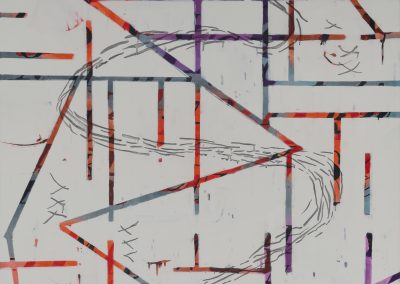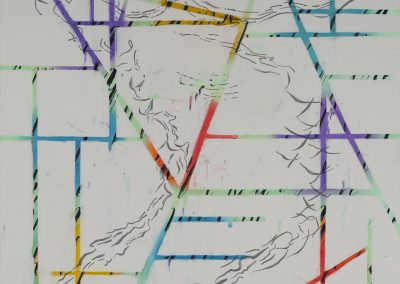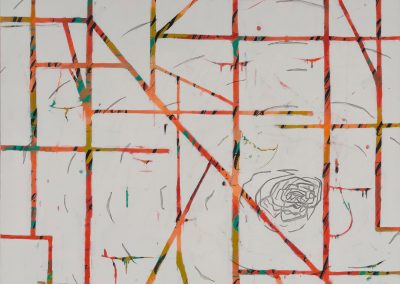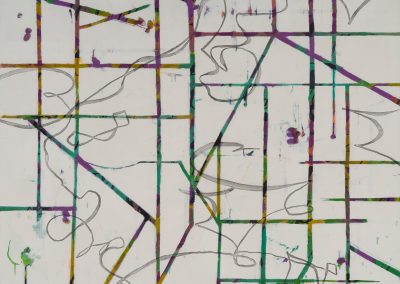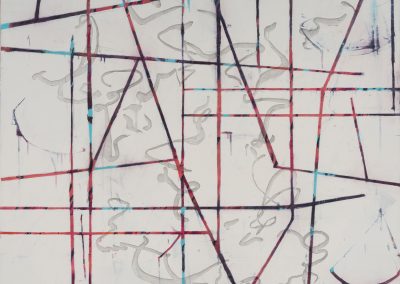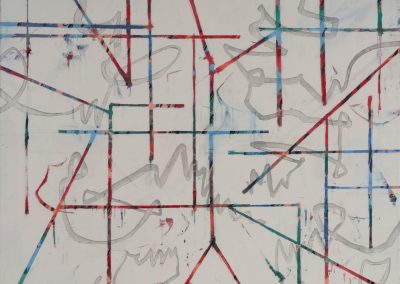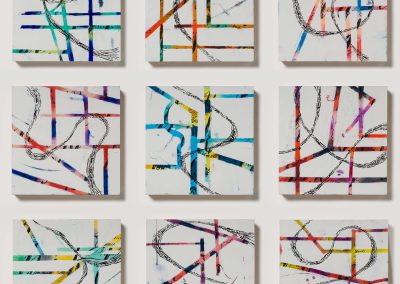paintings volume 7
Redrawn Topographies: Human and Wild Imprints on the Land
In these paintings, with their map-like, aerial views, I continue my development of an abstract language to communicate the dissonance between nature and human development. Inspired by living in the Greater Yellowstone Ecosystem, I contemplate the primordial force of migrating animals and their challenges. Subdivisions, street grids, agricultural fields, wind turbines, highways, fences, power lines, and other manmade interventions—expressed through the rectilinear patterning in the paintings—are increasingly disrupting the ancient routes of wild movement.
The vibrant colors and intricate details of the geometric bands in my work evoke the nuanced complexity of human development and culture over time. From ancient indigenous footpaths to superhighways, the human imprint recalls an often blood-soaked history, but brings obvious societal benefits in the modern age. In this series of paintings, many of the underlayers are composed of silkscreened facsimiles of 19th-century handwritten text (from archives at the Montana Historical Society). These letterforms symbolize language and culture, and bits of black text peek through to the surface. On the uppermost layers, curvilinear gestures reference the migratory movement of animals such as elk, pronghorn, bison, and mule deer. This seasonal phenomenon is driven by the search for forage, and is critical to wildlife abundance. Wild migrations alter the landscape in many interconnected ways, increasing flora and fauna numbers and diversity.
In Redrawn Topographies, contrasting systems of markmaking intersect randomly, at times conflicting with each other. While creating these works, I envision how human development and natural forces might coexist in harmonious ecosystems. Restoring and maintaining habitat connectivity (for example, via conservation easements, roadway crossings, and fence modifications), provides hope that the visual patterns on the land might long continue to reveal a thriving, rhythmic flow of wildlife.
